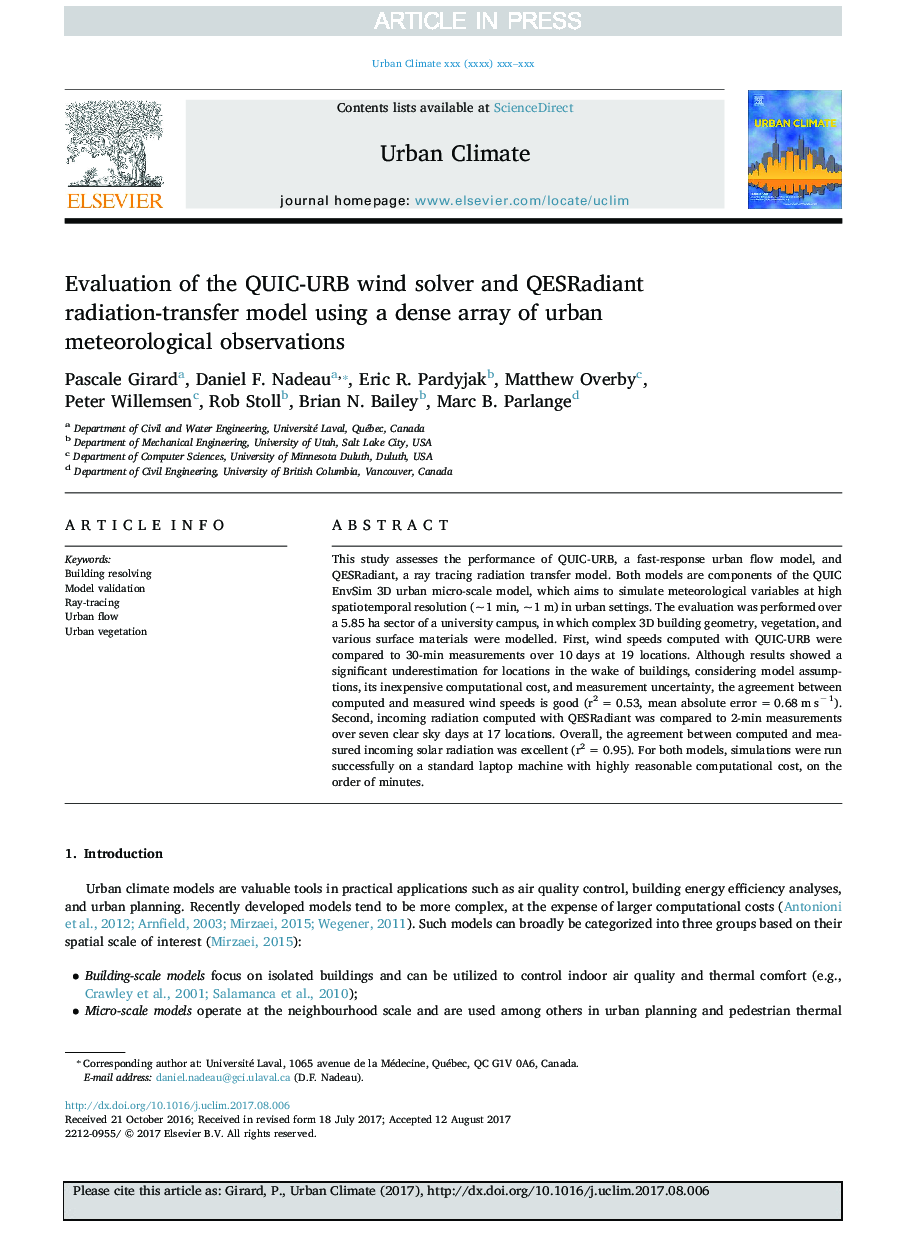| Article ID | Journal | Published Year | Pages | File Type |
|---|---|---|---|---|
| 6576907 | Urban Climate | 2018 | 18 Pages |
Abstract
This study assesses the performance of QUIC-URB, a fast-response urban flow model, and QESRadiant, a ray tracing radiation transfer model. Both models are components of the QUIC EnvSim 3D urban micro-scale model, which aims to simulate meteorological variables at high spatiotemporal resolution (~ 1 min, ~ 1 m) in urban settings. The evaluation was performed over a 5.85 ha sector of a university campus, in which complex 3D building geometry, vegetation, and various surface materials were modelled. First, wind speeds computed with QUIC-URB were compared to 30-min measurements over 10 days at 19 locations. Although results showed a significant underestimation for locations in the wake of buildings, considering model assumptions, its inexpensive computational cost, and measurement uncertainty, the agreement between computed and measured wind speeds is good (r2 = 0.53, mean absolute error = 0.68 m sâ 1). Second, incoming radiation computed with QESRadiant was compared to 2-min measurements over seven clear sky days at 17 locations. Overall, the agreement between computed and measured incoming solar radiation was excellent (r2 = 0.95). For both models, simulations were run successfully on a standard laptop machine with highly reasonable computational cost, on the order of minutes.
Related Topics
Physical Sciences and Engineering
Earth and Planetary Sciences
Earth and Planetary Sciences (General)
Authors
Pascale Girard, Daniel F. Nadeau, Eric R. Pardyjak, Matthew Overby, Peter Willemsen, Rob Stoll, Brian N. Bailey, Marc B. Parlange,
